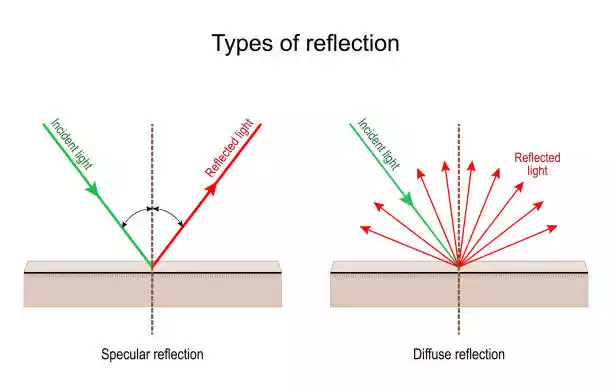Surface Tension and Viscosity: What's Their Difference?
Surface tension and viscosity are two essential properties that play a significant role in determining the behavior and characteristics of fluids.
Surface tension refers to the cohesive forces present between the molecules of a liquid, while viscosity measures a liquid’s resistance to flow.
These properties have far-reaching implications across numerous scientific, technological, and practical domains.
Understanding the intricate interplay between surface tension and viscosity is crucial for comprehending fluid dynamics, engineering processes, biological phenomena, and environmental dynamics.
From the formation of raindrops to the flow of blood in our bodies, surface tension and viscosity govern a wide range of natural and engineered systems.
In this article, we will look into the intricate details of surface tension and viscosity, exploring their definitions, causes, effects, and examples.
Table of Contents
What Is Surface Tension?
Surface tension is a physical property that describes the cohesive force between molecules of a liquid, resulting in the formation of a “skin” or “membrane” at the liquid’s surface.

It is a measure of the attractive forces among the liquid molecules. This force causes the liquid’s surface to contract, minimizing its area and giving rise to the phenomenon of surface tension.
Causes of Surface Tension
Surface tension arises from the intermolecular forces, such as hydrogen bonding, dipole-dipole interactions, and London dispersion forces, between the molecules of a liquid.
These forces create an imbalance of forces on the surface molecules, pulling them inward and minimizing the surface area.
The molecules within the liquid are attracted to each other in all directions, resulting in a net force that pulls the liquid surface together.
Effects of Surface Tension
Surface tension has significant effects on the behavior of liquids. It leads to the formation of spherical droplets, as the spherical shape minimizes the surface area for a given volume.
This is why water droplets form nearly spherical shapes. Surface tension also allows certain objects, like insects, to walk on water.

The cohesive forces within the water create a thin surface layer that can support the weight of small organisms.
Examples of Surface Tension
Surface tension can be observed in numerous real-life examples. One such example is the formation of droplets on a freshly waxed car.
The cohesive forces between water molecules create droplets instead of allowing the water to spread uniformly on the surface.
Another example is the shape of soap bubbles, which is determined by the balance of surface tension and air pressure.
What Is Viscosity?
Viscosity, on the other hand, is a measure of a fluid’s resistance to flow. It is the result of internal friction between the molecules of the liquid as they move past each other.
The more viscous a liquid is, the more resistant it is to flow. Honey, for example, is more viscous than water due to the stronger intermolecular forces and greater friction between its molecules.

Causes of Viscosity
The viscosity of a liquid is primarily determined by the strength of intermolecular interactions and the size and shape of the molecules.
When a liquid is subjected to shear stress, the molecules tend to resist the flow by exerting frictional forces on each other.
The more intense the intermolecular forces and the larger the size of the molecules, the greater the resistance to flow and the higher the viscosity of the liquid.

Effects of Viscosity
Viscosity influences the flow behavior of fluids. Liquids with high viscosity flow more slowly than those with low viscosity. Blood, for example, has a higher viscosity than water, which affects its flow through blood vessels.
Viscosity also affects the dissipation of energy in fluid flow, leading to the conversion of mechanical energy into heat.
Examples of Viscosity
The concept of viscosity can be illustrated through various examples. For instance, the flow of honey compared to the flow of water showcases the difference in viscosity between the two liquids.
Honey flows much more slowly than water due to its higher viscosity. Another example is the movement of lava during a volcanic eruption, where the highly viscous lava moves sluggishly due to its resistance to flow.
Differences between Surface Tension and Viscosity
Surface tension and viscosity are distinct properties of fluids, albeit related to molecular forces.
While surface tension relates to the cohesive forces between liquid molecules at the surface, viscosity pertains to the resistance to flow within the bulk of the liquid.
Surface tension affects the shape and behavior of the liquid’s surface, while viscosity influences the rate of flow and internal friction.
Importance of Surface Tension and Viscosity in Nature
Surface tension and viscosity have vital roles in various natural phenomena. They contribute to the behavior of fluids in plants, enabling water transport from roots to leaves through capillary action.
In insects, surface tension enables them to walk on water surfaces. Viscosity plays a significant role in the circulation of blood in the human body, ensuring efficient flow through blood vessels.
Applications of Surface Tension and Viscosity in Science and Technology
The understanding and manipulation of surface tension and viscosity have practical applications in multiple scientific and technological fields.
Surface tension is utilized in the development of inkjet printing, where precise control of droplet formation is crucial.
Viscosity measurements are essential in industries such as oil and gas, where the flow of fluids through pipelines needs to be optimized.
Wrap Up
Surface tension and viscosity are fundamental properties of fluids that significantly impact their behavior and properties.
Surface tension arises from cohesive forces at the liquid’s surface, leading to the formation of droplets and unique shapes.
Viscosity, on the other hand, describes a liquid’s resistance to flow, which is influenced by intermolecular forces and molecular size.
These properties have diverse applications in scientific research, technology, and everyday activities, making them essential concepts to understand in the study of fluids.
Frequently Asked Questions (FAQs)
- What are the practical applications of surface tension and viscosity? Surface tension and viscosity find applications in various fields, including industrial processes, material science, biology, and medicine.
They are crucial in inkjet printing, detergent formulation, oil recovery, drug delivery systems, and the study of fluid dynamics. - How are surface tension and viscosity measured? Surface tension can be measured using techniques such as the pendant drop method or the capillary rise method.
Viscosity is commonly measured using viscometers, which determine the time taken for a liquid to flow through a capillary of known dimensions. - Can surface tension and viscosity be altered or modified? Yes, surface tension and viscosity can be altered by changing the temperature, pressure, or the addition of substances known as surfactants.
Surfactants can lower surface tension and modify the flow behavior of liquids. - Do all liquids exhibit the same level of surface tension and viscosity? No, different liquids exhibit different levels of surface tension and viscosity.
The molecular properties of the liquid, such as intermolecular forces and molecular size, determine these characteristics. - How do surface tension and viscosity affect everyday activities? Surface tension and viscosity play roles in various everyday activities. Surface tension is responsible for the behavior of droplets, such as water on a car’s surface or the shape of soap bubbles.
Viscosity affects the flow of liquids, influencing processes like pouring liquids, stirring, or mixing ingredients in cooking.





